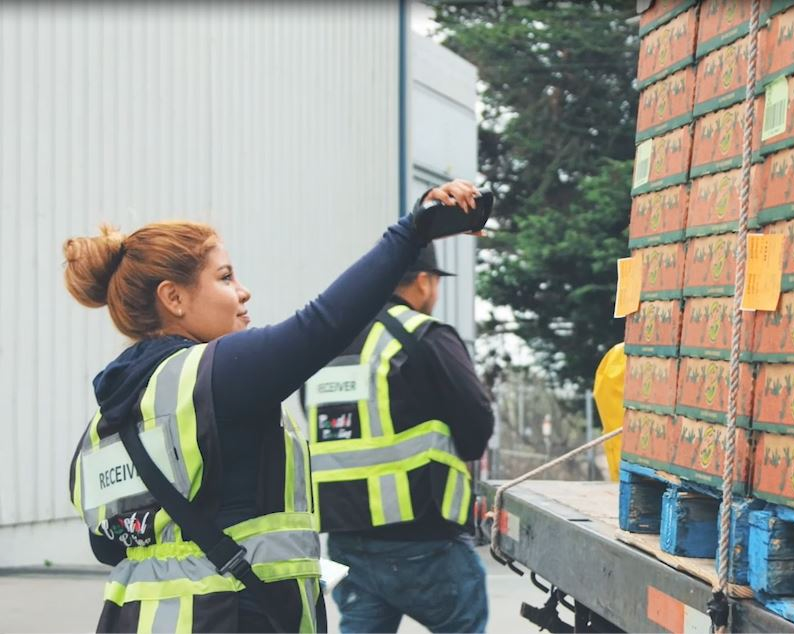The agriculture technology industry – more commonly known as AgTech – is ripe for accelerated growth. Over the past few years we’ve seen widespread adoption of technologies such as pre-harvest sensors for monitoring irrigation, fertilization and weed abatement, and drones that provide farmers greater remote crop visibility. There’s also been a lot of investment in “last mile” technologies as food moves from the supplier to the retailer and consumer.
But what about what’s in between, that space between harvest and delivering fresh food into the distribution system?
An AgTech industry colleague, Seana Day, a partner at Better Food Ventures and The Mixing Bowl, in a blog post on AgFunder, makes some great observations. I’ve highlighted some of them in this blog, but I recommend you also read her entire blog post. Seana is also the author of this year’s 2019 Agtech Landscape which identifies a wealth of AgTech companies – Seana is now tracking over 1,600 startups that are working in AgTech.
Opportunities for Growth in Agriculture Technology
In her blog, Seana points out that, in previous years, the AgTech landscape “was a more equal division between ‘In-field’ and ‘Post-harvest’ startups, but now we’re seeing more startups — close to two-thirds — focusing on the post-harvest space.” Why? Seana writes “An important driver of this broader activity in AgTech is a shift from ‘farming to maximize yield’ to ‘farming to maximize profit’ by looking at farming operations, not just precision ag.” Because of increasing competition, lower prices and other factors, farmers are looking for ways to improve operations to reduce costs, improve labor utilization and increase operational efficiencies.
AgTech: The Messy Middle
Seana explains some of the drivers for growth in post-harvest AgTech. She points out that “growth in ‘post-harvest’ innovation could be attributed to increased focus on the often overlooked ‘first mile’ of food logistics and transport after the farm gate to the packer, shipper or processor.”
Seana terms this first mile of food logistics from the farm to the packer/shipper/processor as the “Messy Middle of Food” and proposes this portion of the supply chain “could be drastically improved and through better integration of on-farm activity with post-harvest activity (like logistics, freshness monitoring, and processing) there may be ways for food producers to reduce waste, improve profitability, monitor quality, or develop new value-add opportunities.”
This segment includes logistics, sensing and analytics technologies that can be applied at the point of harvest through to the packer, shipper or processor. On the 2019 AgTech Landscape, this includes areas such as “Post-harvest Monitoring” where she includes Zest Labs and our Zest Fresh solution.
According to Seana, investment in Midstream Technologies, as termed by AgFunder, increased 44% to $852 million in 2018. She writes that, while this is the fourth biggest upstream category, it’s still well behind the investment in “last-mile” consumer-focused startups which received more than $8 billion of funding in 2018.
The Business Opportunity for “The Messy Middle”
Additional motivators for investment and improvement in post-harvest management include the ability to reduce food waste across the supply chain — a $1 trillion problem — and the need for improving traceability, provenance and food safety and security. Seana states that “Data transparency will provide the linking mechanism in the previously mentioned drivers and also address the desire for food companies to tell consumers about the provenance of their products.”
Blockchain: A Cautionary Warning
It seems like I still receive calls each week asking me about blockchain. As I’ve written in previous blogs, blockchain shows promise but even leading analysts like Gartner are expressing skepticism and caution. Seana also provides cautionary advice when it comes to blockchain in the AgTech-driven supply chain:
“I would be remiss not to mention the buzzword of “blockchain for food”. I see this as a triggering technology that will wind its way– gradually– through the messy middle of food…. That said, the adoption curve feels farther on the horizon in agriculture than many might have you believe; not only will farmers and ranchers struggle with the cost/benefit of adoption of blockchain, but there’s still a lot of work to be done to establish the basic data flows in agriculture operations. The data need to be in place first before we can start blocking and chaining it. The lack of adoption of open agriculture data standards has much of today’s ag data siloed and is a key barrier to seeing greater tracking and tracing in the industry.”
Agriculture Technology: Where Do We Go From Here?
Until recently, digital transformation has been lagging in the post-harvest AgTech space. Too often post-harvest systems have been paper-based. But leading growers, packers and shippers are now realizing the value of digitizing their post-harvest operations. They’re seeing the value of data and the insights data brings to improve operational efficiency, cut costs, reduce waste and improve the freshness of their produce. Solutions like Zest Fresh can help simplify, clarify and improve the messy middle.


